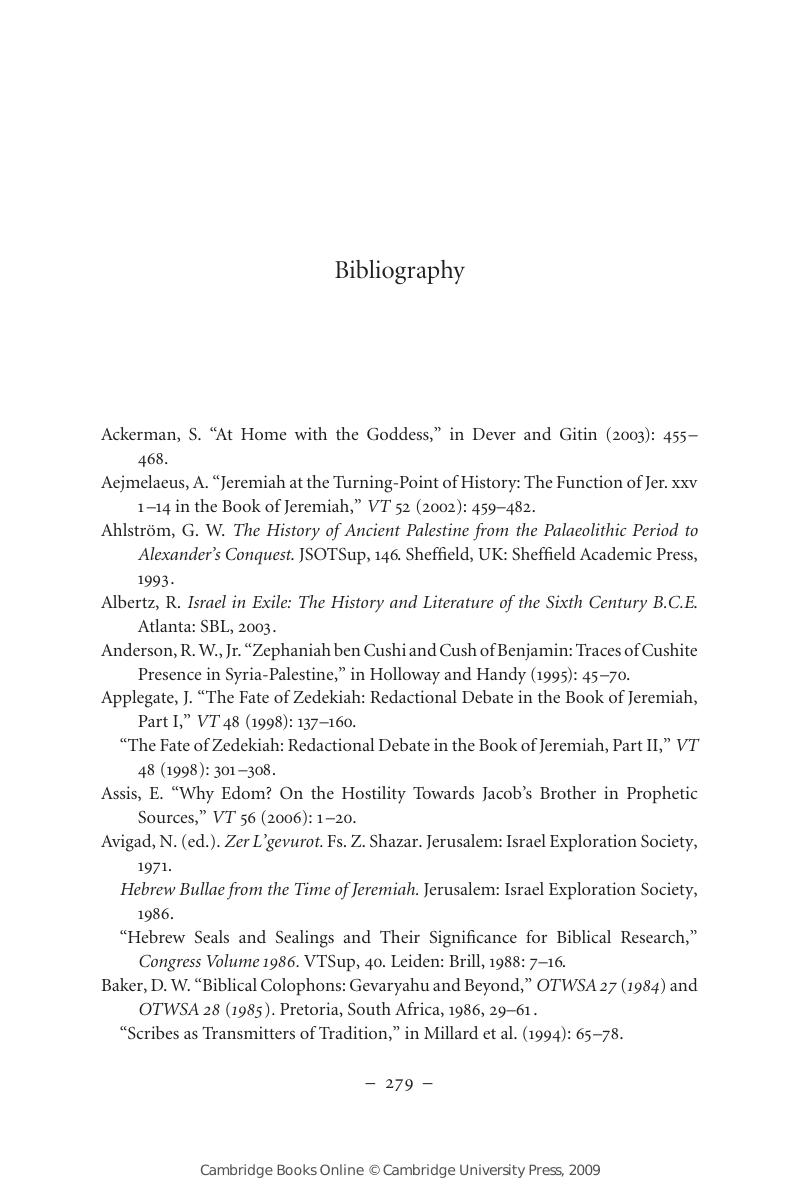Book contents
- Frontmatter
- Contents
- Acknowledgments
- List of Abbreviations
- Note on Citations
- Introduction
- 1 The Hermeneutics of Citation: Jeremiah 26
- 2 The Identification of Legitimate Israel: Jeremiah 27–32:15
- EXCURSUS 1 THE REDACTION OF JEREMIAH 1–25:13+OAN
- EXCURSUS 2 THE REENGAGEMENT OF THE ROYAL LINE IN JEREMIAH 33:14–26
- 3 The Standards of Faith and Intermediation: Jeremiah 34–36
- 4 The Fall of Judah, the Descent into Egypt, and Baruch ben Neriah: Jeremiah 37–45
- EXCURSUS 3 THE “WORDS OF JEREMIAH” AND SERAIAH'S COLOPHON IN THE MT AND LXX TRADITIONS
- 5 The Polemics of Exile
- 6 The Exilic Coalition between the Shaphanides and Levites
- Conclusion
- Notes
- Bibliography
- Author Index
- Scriptural and Extra-Biblical Texts Index
- Subject Index
- References
Bibliography
Published online by Cambridge University Press: 27 July 2009
- Frontmatter
- Contents
- Acknowledgments
- List of Abbreviations
- Note on Citations
- Introduction
- 1 The Hermeneutics of Citation: Jeremiah 26
- 2 The Identification of Legitimate Israel: Jeremiah 27–32:15
- EXCURSUS 1 THE REDACTION OF JEREMIAH 1–25:13+OAN
- EXCURSUS 2 THE REENGAGEMENT OF THE ROYAL LINE IN JEREMIAH 33:14–26
- 3 The Standards of Faith and Intermediation: Jeremiah 34–36
- 4 The Fall of Judah, the Descent into Egypt, and Baruch ben Neriah: Jeremiah 37–45
- EXCURSUS 3 THE “WORDS OF JEREMIAH” AND SERAIAH'S COLOPHON IN THE MT AND LXX TRADITIONS
- 5 The Polemics of Exile
- 6 The Exilic Coalition between the Shaphanides and Levites
- Conclusion
- Notes
- Bibliography
- Author Index
- Scriptural and Extra-Biblical Texts Index
- Subject Index
- References
Summary

- Type
- Chapter
- Information
- The Polemics of Exile in Jeremiah 26-45 , pp. 279 - 298Publisher: Cambridge University PressPrint publication year: 2007



